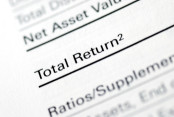
Dividend Investing Ideas Center
Critical Facts You Need to Know About Preferred Stocks
Have you ever wished for the safety of bonds, but the return potential...















Name
As of 12/10/2024Price
Aum/Mkt Cap
YIELD
Exp Ratio
Watchlist
YTD Return
6.4%
1 yr return
7.0%
3 Yr Avg Return
0.7%
5 Yr Avg Return
1.2%
Net Assets
$324 M
Holdings in Top 10
43.1%
Expense Ratio 1.66%
Front Load N/A
Deferred Load N/A
Turnover N/A
Redemption Fee N/A
Standard (Taxable)
$1,000
IRA
$250
Fund Type
Open End Mutual Fund
Name
As of 12/10/2024Price
Aum/Mkt Cap
YIELD
Exp Ratio
Watchlist
| Period | QOPNX Return | Category Return Low | Category Return High | Rank in Category (%) |
|---|---|---|---|---|
| YTD | 6.4% | -73.0% | 19.4% | 73.48% |
| 1 Yr | 7.0% | -9.1% | 86.9% | 65.82% |
| 3 Yr | 0.7%* | -9.5% | 16.2% | 75.50% |
| 5 Yr | 1.2%* | -4.9% | 14.4% | 80.27% |
| 10 Yr | 1.3%* | -0.9% | 7.5% | 78.72% |
* Annualized
| Period | QOPNX Return | Category Return Low | Category Return High | Rank in Category (%) |
|---|---|---|---|---|
| 2023 | -1.3% | -22.7% | 305.1% | 67.04% |
| 2022 | -9.9% | -9.8% | 27.3% | 54.03% |
| 2021 | -0.5% | -20.8% | 10.9% | 19.56% |
| 2020 | -0.5% | -12.4% | 29.4% | 87.13% |
| 2019 | 4.5% | -10.5% | 15.8% | 47.12% |
| Period | QOPNX Return | Category Return Low | Category Return High | Rank in Category (%) |
|---|---|---|---|---|
| YTD | 6.4% | -73.0% | 19.4% | 73.48% |
| 1 Yr | 7.0% | -13.4% | 86.9% | 60.36% |
| 3 Yr | 0.7%* | -9.5% | 16.2% | 67.47% |
| 5 Yr | 1.2%* | -5.3% | 14.4% | 76.68% |
| 10 Yr | 1.3%* | -0.9% | 7.5% | 76.60% |
* Annualized
| Period | QOPNX Return | Category Return Low | Category Return High | Rank in Category (%) |
|---|---|---|---|---|
| 2023 | 3.2% | -22.7% | 305.1% | 67.04% |
| 2022 | -7.5% | -9.8% | 27.3% | 54.44% |
| 2021 | 2.2% | -20.8% | 10.9% | 27.56% |
| 2020 | 1.2% | -8.4% | 29.4% | 93.56% |
| 2019 | 6.3% | -10.2% | 18.0% | 56.02% |
| QOPNX | Category Low | Category High | QOPNX % Rank | |
|---|---|---|---|---|
| Net Assets | 324 M | 1.5 M | 5.01 B | 20.66% |
| Number of Holdings | 502 | 4 | 4478 | 32.86% |
| Net Assets in Top 10 | 136 M | -398 M | 2.55 B | 30.39% |
| Weighting of Top 10 | 43.08% | 13.1% | 100.0% | 20.64% |
| Weighting | Return Low | Return High | QOPNX % Rank | |
|---|---|---|---|---|
| Cash | 39.26% | -6278.21% | 410.43% | 58.30% |
| Stocks | 35.82% | -3.75% | 97.95% | 47.00% |
| Bonds | 24.74% | -326.45% | 6347.80% | 33.22% |
| Convertible Bonds | 0.43% | 0.00% | 87.92% | 46.64% |
| Other | 0.19% | -21.53% | 148.54% | 32.51% |
| Preferred Stocks | 0.00% | -0.12% | 46.97% | 76.68% |
| Weighting | Return Low | Return High | QOPNX % Rank | |
|---|---|---|---|---|
| Technology | 20.62% | 0.00% | 39.58% | 33.07% |
| Healthcare | 16.94% | 0.00% | 45.63% | 14.57% |
| Consumer Defense | 11.84% | 0.00% | 13.62% | 3.54% |
| Financial Services | 9.64% | 0.00% | 59.28% | 83.07% |
| Industrials | 9.52% | 0.00% | 21.45% | 41.73% |
| Communication Services | 8.67% | 0.00% | 21.78% | 10.63% |
| Consumer Cyclical | 7.90% | 0.00% | 29.09% | 86.61% |
| Utilities | 6.29% | 0.00% | 9.23% | 65.35% |
| Energy | 3.54% | 0.00% | 100.00% | 69.69% |
| Basic Materials | 2.56% | 0.00% | 27.46% | 75.59% |
| Real Estate | 2.48% | 0.00% | 51.26% | 67.32% |
| Weighting | Return Low | Return High | QOPNX % Rank | |
|---|---|---|---|---|
| US | 35.82% | -8.85% | 91.88% | 35.69% |
| Non US | 0.00% | -19.62% | 42.11% | 63.60% |
| Weighting | Return Low | Return High | QOPNX % Rank | |
|---|---|---|---|---|
| Government | 36.30% | 0.00% | 84.29% | 18.73% |
| Cash & Equivalents | 26.07% | 0.27% | 100.00% | 42.76% |
| Corporate | 12.85% | 0.00% | 87.73% | 56.54% |
| Derivative | 0.19% | 0.00% | 88.81% | 67.84% |
| Securitized | 0.11% | 0.00% | 56.83% | 47.70% |
| Municipal | 0.00% | 0.00% | 27.33% | 74.56% |
| Weighting | Return Low | Return High | QOPNX % Rank | |
|---|---|---|---|---|
| US | 20.91% | -126.19% | 6311.18% | 33.92% |
| Non US | 3.83% | -382.37% | 121.02% | 28.62% |
| QOPNX Fees (% of AUM) | Category Return Low | Category Return High | Rank in Category (%) | |
|---|---|---|---|---|
| Expense Ratio | 1.66% | 0.29% | 31.15% | 52.88% |
| Management Fee | 0.84% | 0.00% | 2.50% | 38.52% |
| 12b-1 Fee | 0.50% | 0.00% | 1.00% | 70.95% |
| Administrative Fee | N/A | 0.01% | 0.30% | N/A |
| QOPNX Fees (% of AUM) | Category Return Low | Category Return High | Rank in Category (%) | |
|---|---|---|---|---|
| Front Load | N/A | 2.50% | 5.75% | N/A |
| Deferred Load | N/A | 1.00% | 5.00% | N/A |
| QOPNX Fees (% of AUM) | Category Return Low | Category Return High | Rank in Category (%) | |
|---|---|---|---|---|
| Max Redemption Fee | N/A | 1.00% | 2.00% | N/A |
Turnover provides investors a proxy for the trading fees incurred by mutual fund managers who frequently adjust position allocations. Higher turnover means higher trading fees.
| QOPNX Fees (% of AUM) | Category Return Low | Category Return High | Rank in Category (%) | |
|---|---|---|---|---|
| Turnover | N/A | 0.00% | 491.00% | 78.23% |
| QOPNX | Category Low | Category High | QOPNX % Rank | |
|---|---|---|---|---|
| Dividend Yield | 0.61% | 0.00% | 4.56% | 69.61% |
| QOPNX | Category Low | Category High | Category Mod | |
|---|---|---|---|---|
| Dividend Distribution Frequency | Annual | Annually | Quarterly | Annually |
| QOPNX | Category Low | Category High | QOPNX % Rank | |
|---|---|---|---|---|
| Net Income Ratio | -0.53% | -2.51% | 6.83% | 42.81% |
| QOPNX | Category Low | Category High | Capital Mode | |
|---|---|---|---|---|
| Capital Gain Distribution Frequency | Annually | Annually | Annually | Annually |
| Date | Amount | Type |
|---|---|---|
| Dec 15, 2023 | $0.148 | OrdinaryDividend |
| Dec 15, 2023 | $0.896 | CapitalGainLongTerm |
| Dec 16, 2022 | $0.617 | CapitalGainLongTerm |
| Dec 16, 2021 | $0.697 | OrdinaryDividend |
| Dec 11, 2020 | $0.439 | OrdinaryDividend |
| Dec 13, 2019 | $0.446 | OrdinaryDividend |
| Dec 13, 2018 | $0.391 | OrdinaryDividend |
| Dec 14, 2017 | $0.370 | OrdinaryDividend |
| Dec 28, 2016 | $0.056 | OrdinaryDividend |
| Dec 29, 2015 | $0.087 | OrdinaryDividend |
| Dec 01, 2014 | $0.397 | OrdinaryDividend |
| Dec 07, 2011 | $0.789 | CapitalGainShortTerm |
| Dec 07, 2011 | $1.353 | CapitalGainLongTerm |
| Dec 28, 2010 | $0.514 | CapitalGainLongTerm |
| Dec 29, 2008 | $0.851 | CapitalGainLongTerm |
| Dec 27, 2007 | $0.507 | CapitalGainShortTerm |
| Dec 27, 2007 | $1.752 | CapitalGainLongTerm |
| Dec 27, 2007 | $3.331 | OrdinaryDividend |
| Dec 07, 2006 | $0.440 | CapitalGainShortTerm |
| Dec 07, 2006 | $0.791 | CapitalGainLongTerm |
| Dec 07, 2006 | $0.267 | OrdinaryDividend |
| Dec 07, 2005 | $1.147 | CapitalGainShortTerm |
| Dec 07, 2005 | $3.072 | CapitalGainLongTerm |
| Dec 07, 2005 | $0.126 | OrdinaryDividend |
| Dec 07, 2004 | $2.227 | CapitalGainShortTerm |
| Dec 09, 2003 | $0.004 | OrdinaryDividend |
| Dec 10, 2002 | $0.230 | OrdinaryDividend |
| Dec 10, 2001 | $0.518 | OrdinaryDividend |
Start Date
Tenure
Tenure Rank
Oct 15, 2020
1.62
1.6%
Start Date
Tenure
Tenure Rank
Oct 15, 2020
1.62
1.6%
Chris Devine joined Invesco in 1998 and became affiliated with the Global Asset Allocation team in January 2003. He is responsible for portfolio construction, risk management, trading and derivative management. He began his investment management career in 1996 and was with The Robinson-Humphrey Co. prior to joining Invesco. Mr. Devine earned a Bachelor of Arts degree in economics from Wake Forest University and a Master of Business Administration degree from the University of Georgia. He is a CFA charterholder.
Start Date
Tenure
Tenure Rank
Oct 15, 2020
1.62
1.6%
Scott Wolle is a portfolio manager and chief investment officer (CIO) of Invesco Global Asset Allocation. Mr. Wolle joined Invesco in 1999 and became affiliated with the Global Asset Allocation team in 2000. He began his investment management career in 1991 and was with Bank of America prior to joining Invesco. Mr. Wolle earned a Bachelor of Science in finance from Virginia Polytechnic Institute and State University, graduating magna cum laude. He earned a MBA from the Fuqua School of Business at Duke University where he earned the distinction of Fuqua Scholar. He is a CFA charterholder.
Start Date
Tenure
Tenure Rank
Oct 15, 2020
1.62
1.6%
Jay Raol, Portfolio Manager, has been associated with Invesco and/or its affiliates since 2013.
Start Date
Tenure
Tenure Rank
Oct 15, 2020
1.62
1.6%
Scott Hixon joined Invesco in 1994 and became affiliated with the Global Asset Allocation team in 1997. He is responsible for the fundamental research, quantitative modeling and portfolio investment decisions for asset classes and currencies. Mr. Hixon began his investment management career in 1992 and was with SunTrust Bank prior to joining Invesco. He earned a Bachelor of Business Administration in finance, graduating magna cum aude from Georgia Southern University. He earned an M.B.A. in finance from Georgia State University. Mr. Hixon is a CFA charterholder.
| Category Low | Category High | Category Average | Category Mode |
|---|---|---|---|
| 0.02 | 17.37 | 4.48 | 1.67 |

Dividend Investing Ideas Center
Have you ever wished for the safety of bonds, but the return potential...

Dividend Investing Ideas Center
If you are reaching retirement age, there is a good chance that you...

Dividend Investing Ideas Center
If you are reaching retirement age, there is a good chance that you...

